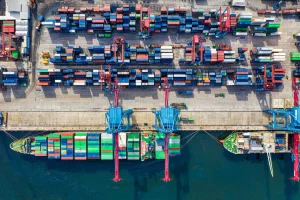As the world scrambles to contain new outbreaks of Covid-19 in heavily affected countries like China, serious supply chain delays are already beginning to take their toll. As a result, industries and businesses around the globe that rely on Chinese imports are feeling the strain while bracing for further disruption. With factories across China facing a renewed climate of lockdown and restriction, orders placed with these sites could easily be left delayed or fulfilled late – leaving business owners both big and small unsure as to when they might receive their supplies. In this blog post, we’ll explore some of the issues surrounding recent Winter 2022 Covid-19 outbursts in China and discuss how long it might take for Chinese production to return back to normal levels so that importing businesses can continue operations without interruption.
Serious Disruptions for Companies Doing Business With China
As Chinese cities enter lockdown to contain the further spread of the virus, already strained resources are limiting the capacity of suppliers and their ability to deliver on their commitments. With millions of workers unable to travel or go back to their jobs, output and trade numbers are expected to take a hit. This translates into potential delays and interruptions in deliveries from China and consequently creates uncertainty among customers and businesses around the world. To handle this crisis, companies must now focus on resilience via flexibility in adapting processes and strategies while being mindful not to compromise on quality control and compliance as supply chains transform.
Reports: Companies Facing Shortages of Goods Due to the Delays
In China, reports of companies facing shortages of goods due to massive delays have already surfaced. Businesses everywhere are likely to feel the impacts of potentially significant supply chain disruptions coming out of China, as even big names such as Apple are feeling the pressure. In an effort to minimize risk, many companies are turning their attention toward alternative approved suppliers or reworking their overall sourcing strategy in order to mitigate any potential losses due to these disruptions. Still, only time will tell how this crisis will ultimately affect businesses large and small around the world.
Worse Conditions & Proactive Strategies of Companies
The situation could quickly get worse if infection rates rise and lead to more stringent containment efforts, which would increase delivery times or create shortages in certain areas. It’s important for companies all over the world to take proactive steps to ensure that delivery networks and other resources remain operational during this critical time while also monitoring close trends so they can be prepared if needed. No one wants a surprise cost, delays, or disruptions to their business due to an unforeseen event like this. Though it is a difficult period, and the situation could get worse before it gets better – with careful planning, reliable partners, and quick action when needed, companies can weather any storm.
Final Words
The Chinese government has taken drastic measures to try and contain the spread of the disease, including shutting down entire cities and canceling all public events. These measures have had a major impact on businesses throughout China, particularly those that rely on factories located in affected areas. Many companies are now scrambling to find new suppliers outside of China to avoid serious delays in their supply chains. While it is still too early to tell how long this outbreak will last or what its final toll will be, one thing is certain: businesses around the globe will feel the repercussions for some time to come.




0 Comments